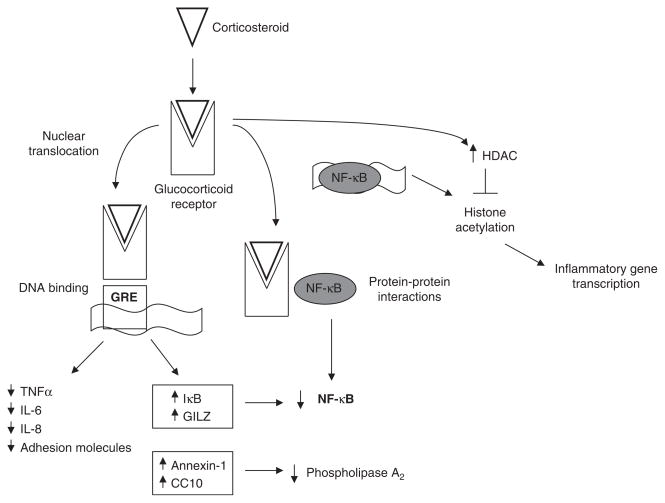Fig. 2.
Mechanism of action of corticosteroids on inflammatory pathways relevant to cystic fibrosis (CF). Binding of corticosteroids to the cytoplasmic glucocorticoid receptor (cGR) results in the dissociation of the cGR from molecular chaperones that cover sites on the receptor that signal transport to the nucleus. Subsequent nuclear translocation allows the glucocorticoid-cGR complex to affect inflammatory signaling through multiple mechanisms. Binding to the glucocorticoid response-element (GRE) promoter region of corticosteroid-sensitive genes results in decreased transcription of proinflammatory gene products and increased transcription of anti-inflammatory gene products. The activity of nuclear factor (NF)-κB, central to the inflammatory response in the CF airway, is likely decreased by multiple mechanisms. These include upregulation of the inhibitory protein-κB (IκB), protein-protein interactions between the cGR complex, and increased histone deacetylase (HDAC) activity downstream of NF-κB binding to DNA. CC10 = Clara cell 10-kDa protein; IL = interleukin; GILZ = glucocorticoid-induced leucine zipper protein; TNFα = tumor necrosis factor-α.

